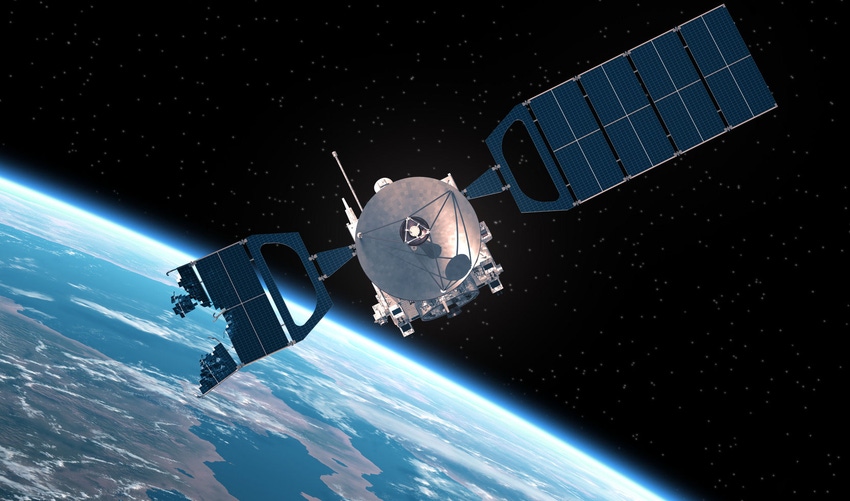The US Federal Communications Commission (FCC) has proposed new rules designed to tackle the growing problem of space debris.
September 12, 2022

The US Federal Communications Commission (FCC) has proposed new rules designed to tackle the growing problem of space debris.
Chairwoman Jessica Rosenworcel said late last week that she wants to reduce the length of time that low Earth orbit (LEO) satellites spend floating around in space after the end of their mission from 25 years to no longer than five. A shorter timescale for making them burn up in Earth’s atmosphere – or ‘deorbit’, to use the sterile technical term – would curb the risk of them colliding with something useful like a functioning satellite, which would potentially disrupt vital comms services and create yet more space junk.
“Since 1957 humanity has put thousands of satellites into the sky, often with the understanding that they were cheaper to abandon than take out of orbit. These satellites can stay in orbit for decades, careening around our increasingly crowded skies as space junk and raising the risk of collisions that can ruin satellites we count on,” said Rosenworcel, in a statement on Friday.
Indeed, figures published in August by the European Space Agency (ESA)’s Space Debris Office said there are approximately 31,810 bits of junk orbiting Earth that are regularly tracked by space surveillance networks. When it comes to satellites, the ESA said there are around 8,850 currently in space, but only 6,400 of them are still functioning, leaving some 2,450 defunct satellites that have yet to deorbit.
But this is just the tip of the iceberg (or should that be space-berg?). Based on statistical models, the quantity of debris is estimated to be much, much greater. The ESA thinks there are 36,500 pieces of debris greater than 10 centimetres in diameter; a further 1 million pieces that are 1-10cm wide; and another 130 million that are 1mm-1cm wide. According to NASA, a bit of space junk can travel at speeds of up to 17,500 miles per hour – around 10 times faster than a speeding bullet – so it is likely to make a big mess of anything unfortunate enough to get in its way.
As everyone knows, the telecom sector’s interest in space has never been greater. Recent highlights include Vodafone partnering with positioning specialist Topcon to enhance the accuracy of positioning satellites, and carrier BICS doing a deal with satellite-direct-to-phone company Lynk to offer connectivity to remote areas. The latter partnership came shortly after Elon Musk’s Space-X struck a partnership with T-Mobile US, and announced its own satellite-direct-to-phone ambitions. As if further validation were needed, Apple’s newest iPhone will be able to use satellite connectivity to send emergency messages.
“Our space economy is moving fast. For it to continue to grow, we need to do more to clean up after ourselves so space innovation can continue to expand,” said Rosenworcel. “That is why I am proposing to shorten the 25-year guideline to no more than five years. It will mean more accountability and less risk of collisions that increase debris.”
The proposals specifically apply to LEO satellites, and if they pass, it means the space industry in all likelihood will have to incorporate technologies that actively speed up the deorbiting process. These include but are not limited to additional thrusters to propel the satellite towards the atmosphere. There is also what’s known as atmospheric drag augmentation, which makes use of deployable structures akin to balloons or sails to increase the surface area of the satellite, making it more susceptible to being dragged into the atmosphere.
A more recent and novel idea shared by NASA in 2020 proposes to harness the inherent propensity of damaged Lithium-Ion batteries to burst into flames. Called the Lithium Ion Battery DeOrbiter (LiBDO), the system would cause a defunct satellite’s on-board battery to be deliberately malfunction and catch fire, which would then be directed through a nozzle to generate thrust. The benefit here is that the system wouldn’t add more fuel or much in the way of componentry – and therefore cost – to a satellite.
The FCC is due to vote on Rosenworcel’s proposals this month.
Get the latest news straight to your inbox. Register for the Telecoms.com newsletter here.
About the Author(s)
You May Also Like








.png?width=300&auto=webp&quality=80&disable=upscale)


_1.jpg?width=300&auto=webp&quality=80&disable=upscale)


.png?width=800&auto=webp&quality=80&disable=upscale)